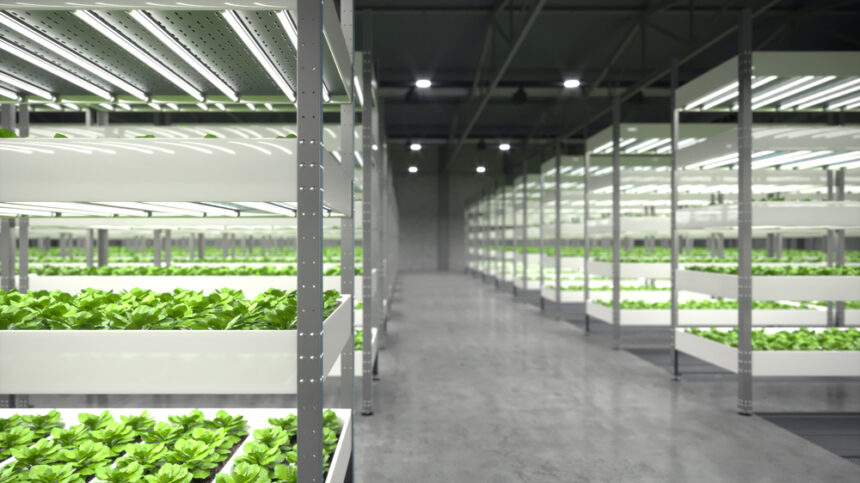The global food landscape is undergoing a significant transformation, driven by the need for sustainable, efficient, and resilient agricultural practices. Among the most promising innovations are indoor growing and vertical farming, poised to revolutionize the freshly grown food market. These methods offer solutions to many of the challenges faced by traditional agriculture, including climate change, land scarcity, and the increasing demand for locally-grown produce. Here’s how indoor growing and vertical farming are shaping the future of food production.
Maximizing Space Efficiency
Traditional farming methods require vast tracts of arable land, which are becoming increasingly scarce due to urbanization and environmental degradation. Vertical farming, however, utilizes multi-layered growing systems in controlled environments, allowing food production in urban settings, even in high-rise buildings. This vertical stacking of crops maximizes space efficiency and significantly increases yield per square meter compared to traditional farming. LED grow lights play a crucial role in this efficiency by providing optimal lighting conditions for plant growth in these multi-tiered systems, ensuring that each layer receives the right amount of light.
Climate Resilience
Indoor growing environments shield crops from unpredictable weather patterns, pests, and diseases, ensuring consistent yearly production. Climate change poses a significant threat to traditional agriculture, with extreme weather events, droughts, and floods becoming more frequent. By growing crops indoors, farmers can control temperature, humidity, light, and CO2 levels, creating optimal growing conditions and mitigating the risks associated with climate variability. This control extends to the use of LED grow lights, which can be adjusted to provide the specific light spectrum needed for different stages of plant growth, further enhancing resilience.
Resource Efficiency
Vertical farms and indoor growing systems are designed to be resource-efficient, using up to 95% less water than traditional farming. Closed-loop systems recycle water and nutrients, reducing waste and environmental impact. Additionally, the proximity of these farms to urban centers reduces the need for long-distance transportation, lowering carbon footprints and ensuring fresher produce for consumers. LED grow lights are also energy-efficient, consuming less electricity than traditional lighting methods, further reducing indoor farming operations’ overall resource consumption.
Reducing Food Miles and Carbon Footprint
Food miles—the distance food travels from farm to consumer—is critical in assessing the environmental impact of our food systems. Indoor and vertical farms, often situated within or near cities, dramatically reduce these distances. This cuts down on transportation emissions and ensures that consumers have access to fresher produce, which is less likely to spoil during transit. The integration of LED grow lights into these systems allows for producing high-quality crops closer to urban populations, further reducing the need for long-haul transportation.
Innovation and Technological Integration
The integration of advanced technologies such as hydroponics, aeroponics, and aquaponics plays a crucial role in the success of indoor and vertical farming. These technologies allow for soil-less growing systems that provide plants with precise nutrients and water, promoting faster growth and higher yields. Additionally, using LED grow lights tailored to the specific needs of different crops enhances photosynthesis and energy efficiency. Innovations in automation and artificial intelligence also enable better monitoring and management of crop conditions, ensuring optimal growth and resource use.
Enhancing Food Security
With the global population expected to reach nearly 10 billion by 2050, ensuring food security is a major concern. Indoor growing and vertical farming can play a significant role in meeting the food demands of the future. These methods can produce various crops year-round, independent of seasonal cycles and geographic limitations, thus contributing to a more stable and secure food supply. LED grow lights ensure that crops receive consistent lighting, which is essential for maintaining productivity and food security.
Economic Opportunities
The rise of indoor and vertical farming also opens up new economic opportunities. Urban agriculture can create jobs and stimulate local economies, providing fresh produce directly to communities. It also encourages the growth of agritech startups and investment in innovative agricultural solutions. The demand for LED grow lights
and other indoor farming technologies also drives economic growth in the tech and manufacturing sectors, creating diverse job opportunities.
Sustainability and Eco-Friendliness
Sustainability is at the heart of indoor and vertical farming. These farming methods produce cleaner and healthier food by reducing the need for pesticides and herbicides. Moreover, their energy-efficient systems and potential to integrate renewable energy sources like solar panels further enhance their eco-friendliness. LED grow lights, with their long lifespan and low energy consumption, contribute significantly to the sustainability of these farming practices by minimizing the environmental impact of artificial lighting.
Consumer Trends and Preferences
Consumers are increasingly conscious of the origins of their food and the environmental impact of their choices. There is a growing demand for locally sourced, fresh, and sustainably grown produce. Indoor and vertical farms meet these preferences by providing high-quality, nutrient-rich food with a minimal ecological footprint. LED grow lights ensure that these farms can produce crops that meet consumer demands for freshness and quality, even in off-season.
Educational and Community Engagement
Indoor and vertical farming initiatives often engage communities and educational institutions, promoting sustainable agriculture and healthy eating awareness. Urban farms can serve as educational hubs, teaching people about the benefits of local food production and the importance of environmental stewardship. Using cutting-edge technologies like LED grow lights can also inspire interest in science and technology among students, fostering a new generation of innovators in sustainable agriculture.
Conclusion
Indoor growing and vertical farming represent a paradigm shift in producing food. By addressing the limitations of traditional agriculture and offering innovative, sustainable solutions, these methods are set to play a crucial role in the future of the freshly grown food market. As technology advances and awareness of environmental issues grows, indoor and vertical farming will likely become an integral part of our food system, ensuring that we can feed the world’s population sustainably and efficiently. The integration of LED grow lights and other advanced technologies will be pivotal in driving this transformation, making it possible to produce high-quality, fresh food in an environmentally friendly and economically viable way.


